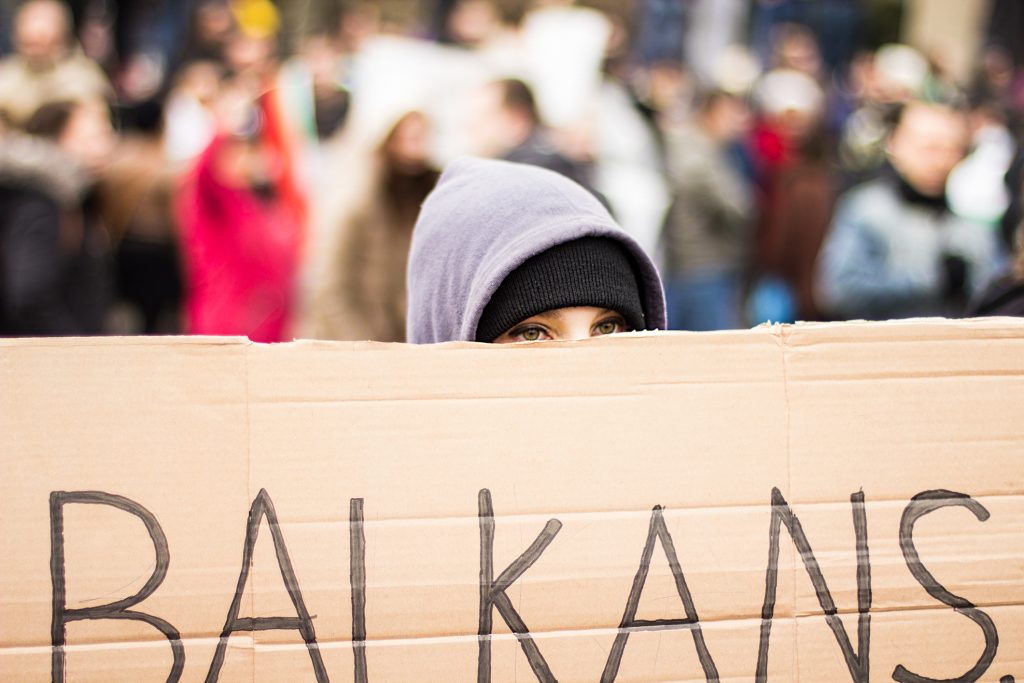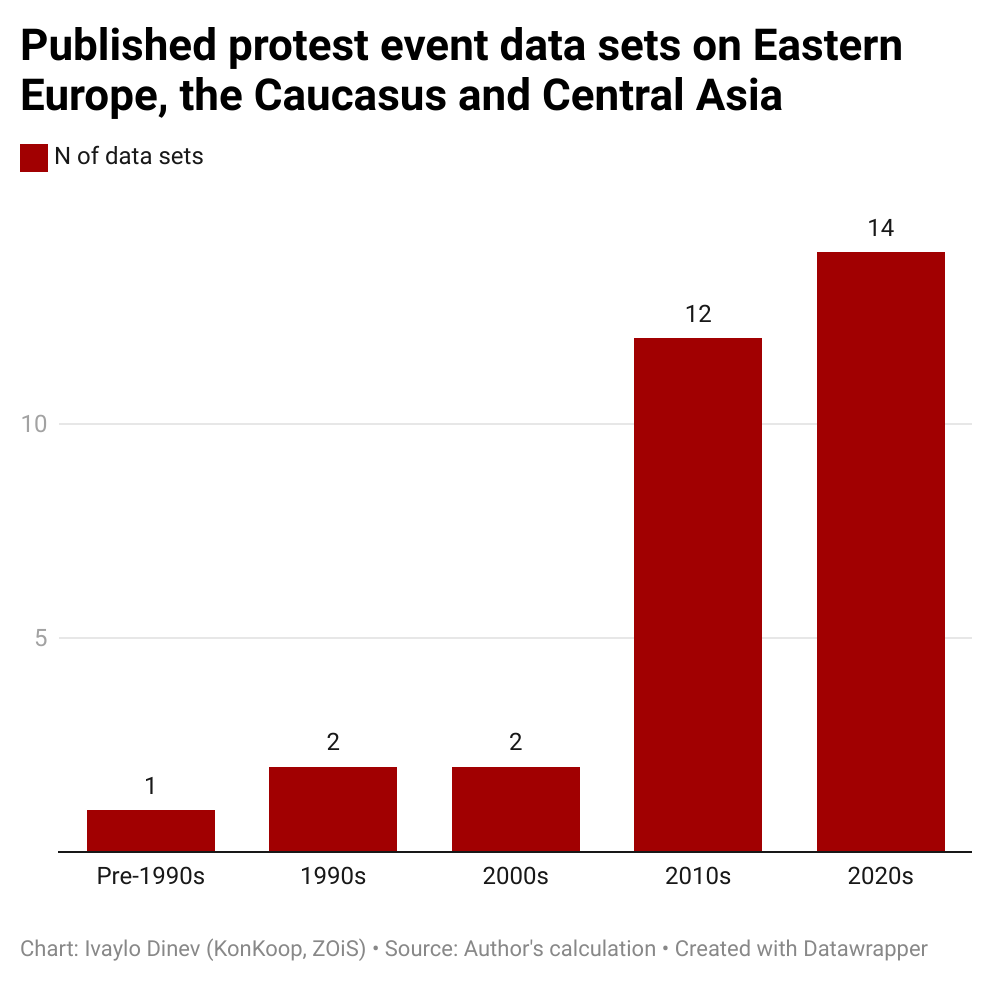
Sofia, Bulgaria, 24.02.2013; the full poster reads “Balkans, wake up” © George Chelebiev, Creative Commons Attribution-NonCommercial-NoDerivs 2.0 Generic (CC BY-NC-ND 2.0)
In the years since 1989, civil society and social movement analysis has been a particular focus of scholarship on social dynamics in Eastern Europe, the Caucasus and Central Asia. This is no coincidence given that many scholars of the region have come to expect that changes in political and economic regimes depend not only on the decisions of political elites but also on the collective actions of citizens. Over the past 35 years, this part of the world has been the site of numerous mass protests, which can broadly be categorised into three historical stages:
- the democratisation wave from the late 1980s to the late 1990s, continuing in some cases into the early 2000s;
- the economic anti-austerity unrest following the global financial crisis;
- the pro-democratic and anti-conservative wave in recent years.
For a long time, this research field was driven by the Western tradition in a search for ‘ideal’ types of (civil) mobilisations/movements. However, scholars are increasingly taking the local dynamics of collective action into account. In this context, protest event analysis (PEA; a type of quantitative content analysis) has emerged as a key method for the analysis of social movements and collective actions in Eastern Europe, the Caucasus and Central Asia.
Published databases and research articles using the PEA method can be divided into four main types:
- Uses content from local press and newswires to cover a medium-term period – see, for example, studies by Dolenec et al. for Serbia and Croatia or by Dinev for Bulgaria and Slovenia;
- Relies on local newspapers or national newswires to cover a long-term period – see, for example, Katrin Uba’s study on Estonia and of Císař and Navrátil’s study on the Czech Republic;
- Uses international newswires and examines a number of countries – see, for example the PolDem EU dataset or Mass Mobilisation in Autocracies Data;
- Relies on content from international newswires about events across the globe – see, for example Global protest tracker or Mass Mobilisation Protest Data;
Over the last two decades, the digital revolution has made it much easier to gather news on protest events, leading to a surge in studies. Thus, whereas this type of research was rare in the 1980s and 1990s, in the last three to four years alone at least 14 data sets on protest events have been developed.

The Multi-Method DataLab for Conflict and Cooperation in Eastern Europe is collecting information and publications on this research method, and a catalogue of protest event data sets in the region will soon be available on the KonKoop website. In this way, the lab aims to connect scholars in this research field and disseminate knowledge on societal dynamics in Eastern Europe, the Caucasus and Central Asia among the public, experts and policymakers.
Data from this publication was already presented at the annual conference of the Italian Society of Political Science (SISP), held in Genoa in September 2023.
 Ivaylo Dinev is a political scientist and a postdoctoral researcher at ZOiS, where he coordinates the Multi-Method Data Laboratory of the KonKoop research network.
Ivaylo Dinev is a political scientist and a postdoctoral researcher at ZOiS, where he coordinates the Multi-Method Data Laboratory of the KonKoop research network.
Citation: Dinev, Ivaylo, Protest event data sets on Eastern Europe, the Caucasus and Central Asia, KonKoop DataLab Blog, published online: 17/04/2024, https://konkoop.de/index.php/network/konkoop-team/labs/protest-event-data-sets-on-eastern-europe-the-caucasus-and-central-asia/
